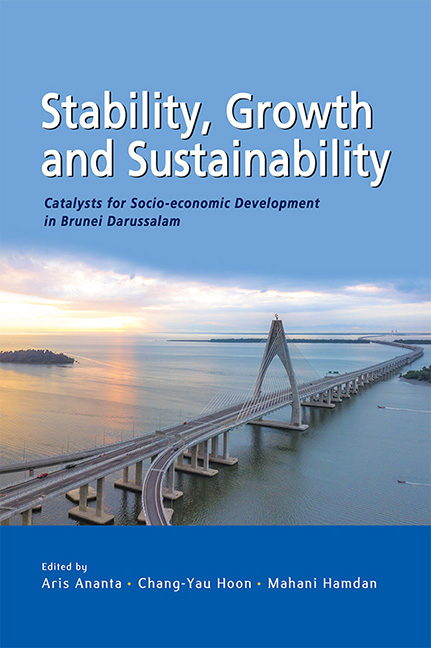3 - Natural Ecosystems and Their Management in Brunei Darussalam
Published online by Cambridge University Press: 10 January 2024
Summary
INTRODUCTION
Brunei is one of the smallest countries in the world. Yet, it boasts one of the highest percentages of forest cover in the world. The monarchy is endowed with a coastline of 161 km and 11 ecosystems that are home to around 15,000 vascular plant species, including 2,000 tree species. The major mountainous peak, Bukit Pagon on the eastern part of Brunei rises to 1,850 m (Ranjith and De Silva 1998; SCBD, n.d.). Brunei’s economy today is largely driven by oil and gas. Yet, local communities and industries have also actively been using the ecosystems and the various tangible and intangible benefits they provide (ecosystem services). In this chapter, I provide an overview of the changing dependencies on Brunei’s ecosystems and their current state. Following that, I explore the challenges faced by the government and local communities in the conservation and management of ecosystems.
CHANGING DEPENDENCIES ON THE ECOSYSTEMS
Brunei is a natural resource dependent state. However, the nature of dependence and the resources that sustained its economy has changed over time. Although oil fields were discovered in 1929, the economy transitioned into an oil and gas dependent only in the 1970s (Hussainmiya 2014; Mukoyama 2020; Schelander 1998). Prior to that, it depended on forest produces (camphor from Dryobalanops aromatica Gaertn.f., rattans, resins, pepper etc.), agriculture, minerals and coal during various points on the historical timescale (Schelander 1998). Cutch emerged as a major forest produce only towards the end of the nineteenth century. Cutch is a khaki dye obtained from mangroves for tanning of leather and treatment of fishing nets (Horton 1985). A cutch factory operated between 1901 and 1904 provided job opportunities to around 300 men from Kampong Ayer (Hussainmiya 2006, pp. xi, 22, 34). From 1906 to 1922, and in 1931, export of cutch made the largest contribution to the exchequer. As a consequence of the boom, mangroves around Brunei Town were overexploited to such an extent that by 1920, most of the mangrove bark that forms the raw material for cutch production was imported (Horton 1985).
During the early part of the twentieth century, Brunei also experimented with plantations.
- Type
- Chapter
- Information
- Stability, Growth and SustainabilityCatalysts for Socio-economic Development in Brunei Darussalam, pp. 51 - 78Publisher: ISEAS–Yusof Ishak InstitutePrint publication year: 2023



